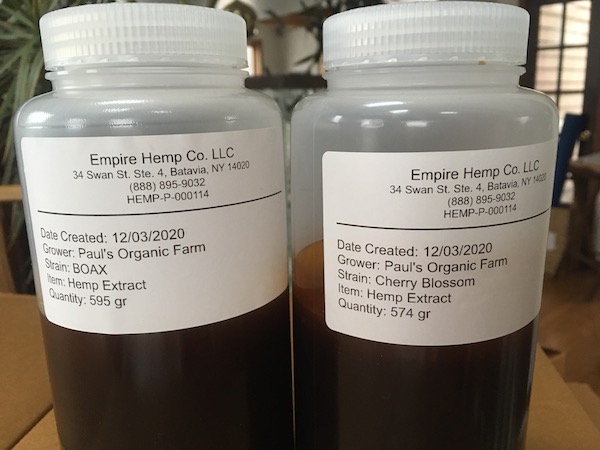
By now most everyone is familiar with CBD, or at least the acronym, but what is it really, and how and why does it work? CBD (cannabidiol), along with THC (tetrahydrocannabinol), are but just two of the more than 100 cannabinoids found in the cannabis plant. The recent surge in popularity of CBD can be attributed to its touted therapeutic health benefits without the psychotropic effects or paranoia often associated with THC.
So how does it work? Humans have what’s known as the endocannabinoid system which helps regulate and balance mood, pain, appetite and more. The cannabinoids from the cannabis plant are so similar to our naturally occurring endocannabinoids that they have been found to perform the same functions. The endocannabinoid system has receptors throughout the body, which explains why cannabinoids have been used to help right imbalances. Thus the proliferation of skin care, pain relief and sleep aid products to name just a few.
All CBD is not created the same, and there are more bogus than real products in the market place! There are three basic varieties of CBD extract:
Full spectrum, meaning all cannabinoids and terpenes in correct proportion, including trace amounts of THC (under 0.3%) have been extracted from the plant.
Broad spectrum, meaning all cannabinoids and terpenes in correct proportion with all THC removed have been extracted from the plant. (mostly for those concerned about positive results from a sensitive drug test)
Isolate, meaning one or more of the cannabinoids have been isolated from the plant during extraction.
Current thinking believes that full spectrum extract delivers the maximum benefit from what’s known as the ‘entourage effect’, where all the cannabinoids work together in harmonious fashion. Those who have compared full spectrum with broad spectrum claim the small amount of THC makes a big difference.
Caveat emptor! CBD is NOT federally regulated, so it’s critical that you do your homework before buying! Some states, like New York, are implementing new laws to regulate the production, processing, manufacturing and retailing of CBD products in an attempt to eliminate those who are selling bad or mislabeled products. See related article: NY to Weed Out CBD Producers
I’m constantly amazed that even the die hard veteran CBD users are stumped when I ask them what exactly they are taking. Very few have actual knowledge of what kind of extract they use, how it was processed, whether or not it’s organic, or even how much CBD or other cannabinoids is in the product they are using. All reputable companies will have their products tested by a third party independent lab and proudly post a Certificate of Analysis (COA) on their website with a link via a QR code on their product. Understanding how to quickly read and interpret a COA is extremely helpful. Most importantly you want to make sure your product is not tainted with mold, fungi, heavy metals, solvents or pesticides. See related article: How to read a Certificate of Analysis (COA).
The process of extraction is also very important. There are four basic methods:
Co2 Extraction, considered the cleanest (and most expensive) because it significantly reduces possible contamination potential associated with other methods.
Solvent Extraction, normally with food grade ethanol, or a hydrocarbon like propane or butane. Efficient and inexpensive, but can affect the taste of the extract and potentially leave behind unwanted residue solvent.
Olive Oil Extraction, Inexpensive, straight forward and easy, but no way to extract the oil from the CBD, so final product is CBD olive oil.
Steam Extraction, the same method used for extracting essential oils, is inexpensive and solvent free, but requires more biomass and produces inconsistent concentrations of CBD.
For more on extraction, see related article: How to Process Hemp.
Other considerations: what is the extract mixed with, and are all the components organic?
How do I take it? What’s the right dose?
Most first time users who claim CBD doesn’t work for them have misperceptions about its use. CBD works more like a vitamin than a pain pill. Although when used topically it can provide almost immediate relief, long term wellness is best achieved through regular use and proper dosage. Those who are used to harder prescription drugs may at first be lost on the comparatively subtle effects of CBD.
CBD products can be designed to be taken by inhalation, sublingually, topically or orally. Inhalation and sublingual have an immediate effect where ingestion can take up to an hour. Some experimentation is usually necessary to find the right dose, and it may be that more than one form provides you with maximum benefit. Some athletes, for example, may rub a product topically into their sore muscles after a hard performance and use ingestibles to help sleep. See related article: CBD & Sports
Dosage is critical and titration is important. Too little or too much will not work. Studies have shown that the average dose is around 120 milligrams/day, but can vary widely. There are those who won’t see any benefit under 1,000 milligrams/day! Whatever your regiment, be patient and be thorough.